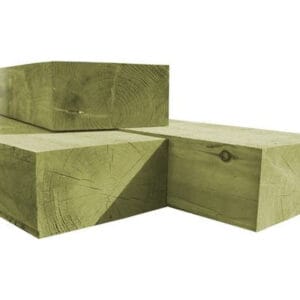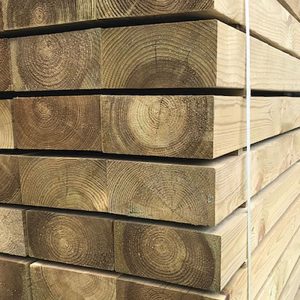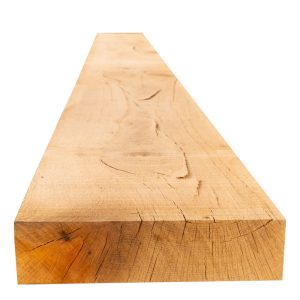What are railway sleepers?
Railway sleepers are large rectangular sawn pieces of timber, traditionally used to support the rails on railroad tracks. In recent years, they have become increasingly popular in the gardening world for landscaping purposes in the form of flowerbeds, steps, edging, and more.
What different kinds of garden sleepers are available?
Garden sleepers are available as original reclaimed sleepers or new railway sleepers. Which type you choose is dependent on the desired look you are trying to achieve. New sleepers will give you a clean, crisp finish and are more suitable for projects where exact accuracy is required. The reclaimed variety will give more character and charm, and have a long life span.
What is the difference between hardwood and softwood sleepers?
If you are looking to purchase new railway sleepers, you will find both hardwood and softwood options available.
Hardwood sleepers are made from oak and are generally heavier than their softwood counterparts. Due to the dense and heavy nature of oak, these sleepers do not require treatment. Mechanical cutting is necessary when working with hardwoods.
Softwood sleepers are lighter and therefore easier to manoeuvre and cut. However, if you are intending to use your sleepers for more heavy-duty applications, such as steps or a pathway, the hardwood option may be more suitable. Softwood sleepers are pressure treated which helps to protect against decay and rot, resulting in many years of use.
What are railway sleepers treated with?
Softwood sleepers are supplied TANALISED, which means the timber has been impregnated with TANALITH wood preservative. This is designed to provide long-term protection against wood decay and insect infestation, wherever the timber is to be used.
Reclaimed sleepers will have originally been treated with creosote which will still be present in the sleeper. This treatment can, in some cases, leech out of the wood, making this type of sleeper unsuitable for uses where they are likely to be in direct contact with people.
Can you cut railway sleepers?
Yes, you can cut railway sleepers. However, it is important to take the correct precautions depending on the type of sleeper you are working with.
Softwood sleepers give the most options when it comes to cutting as they are a lightweight wood. A handsaw, chainsaw or circular saw will all do the job but may have differing results in finish. It is important to remember that cutting treated sleepers will expose untreated ends – ensure these are treated before use.
New oak (hardwood) sleepers will require a mechanical saw due to the density of the wood. A circular saw or chainsaw is recommended.
Reclaimed sleepers again require a mechanical saw. A circular saw will give a neater finish, but will require more cuts to get through the thickness. A chainsaw will get you through in one motion. More caution must be taken when cutting as the sleepers can contain fragments of metal from the tracks/fixings. Always ensure that the correct PPE is worn and you are cutting in a safe area.
How to lay sleepers
Ensure the area is clear and free of any debris. When laying garden sleepers horizontally, dig a shallow trench and fill with concrete and bed the sleepers in. If you are layering the sleepers, ensure you are using the correct fixings for the wood being used. Our Timberlock Heavy Duty Wood Screws are ideal for reclaimed and hardwood sleepers.






